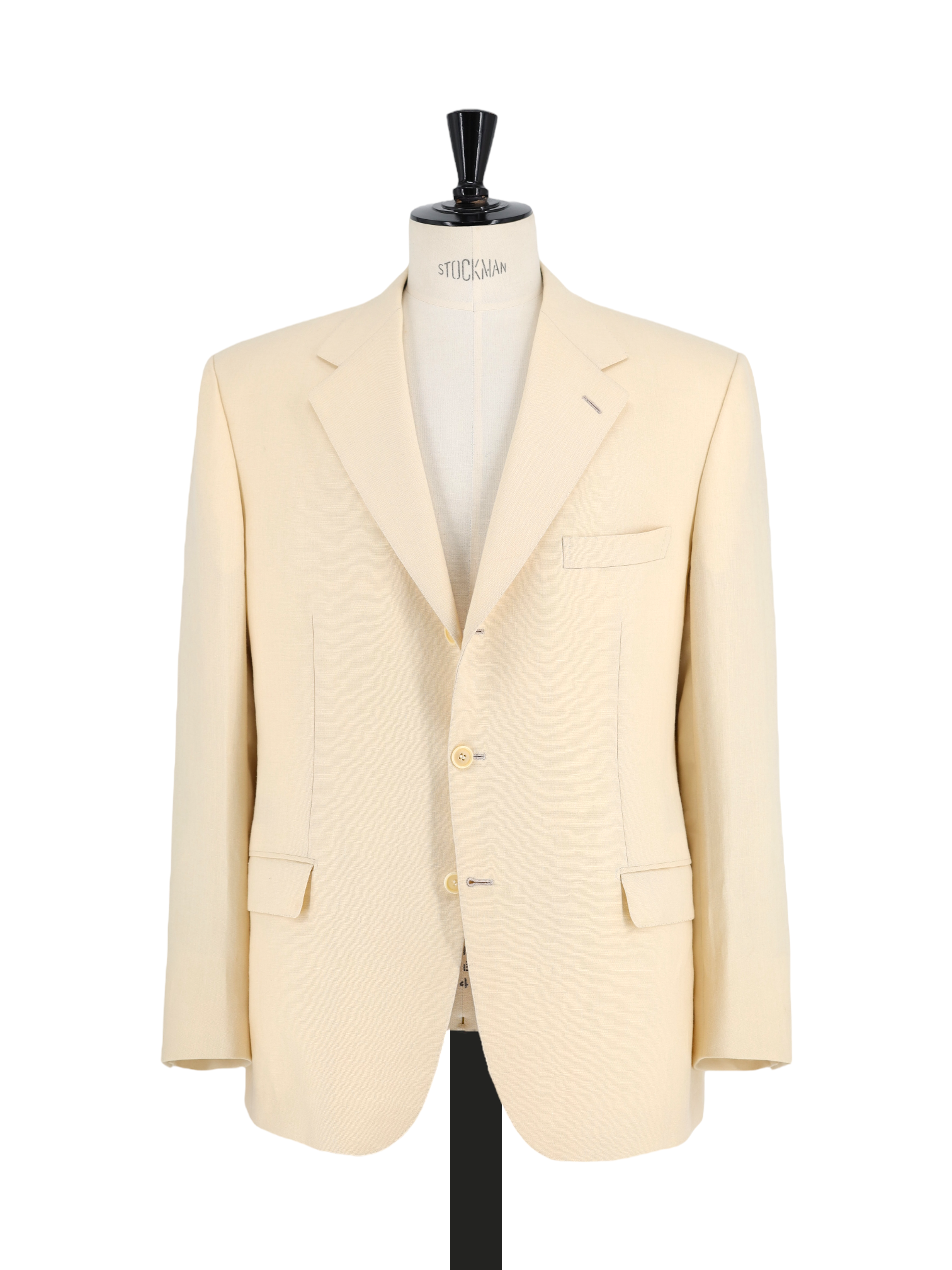
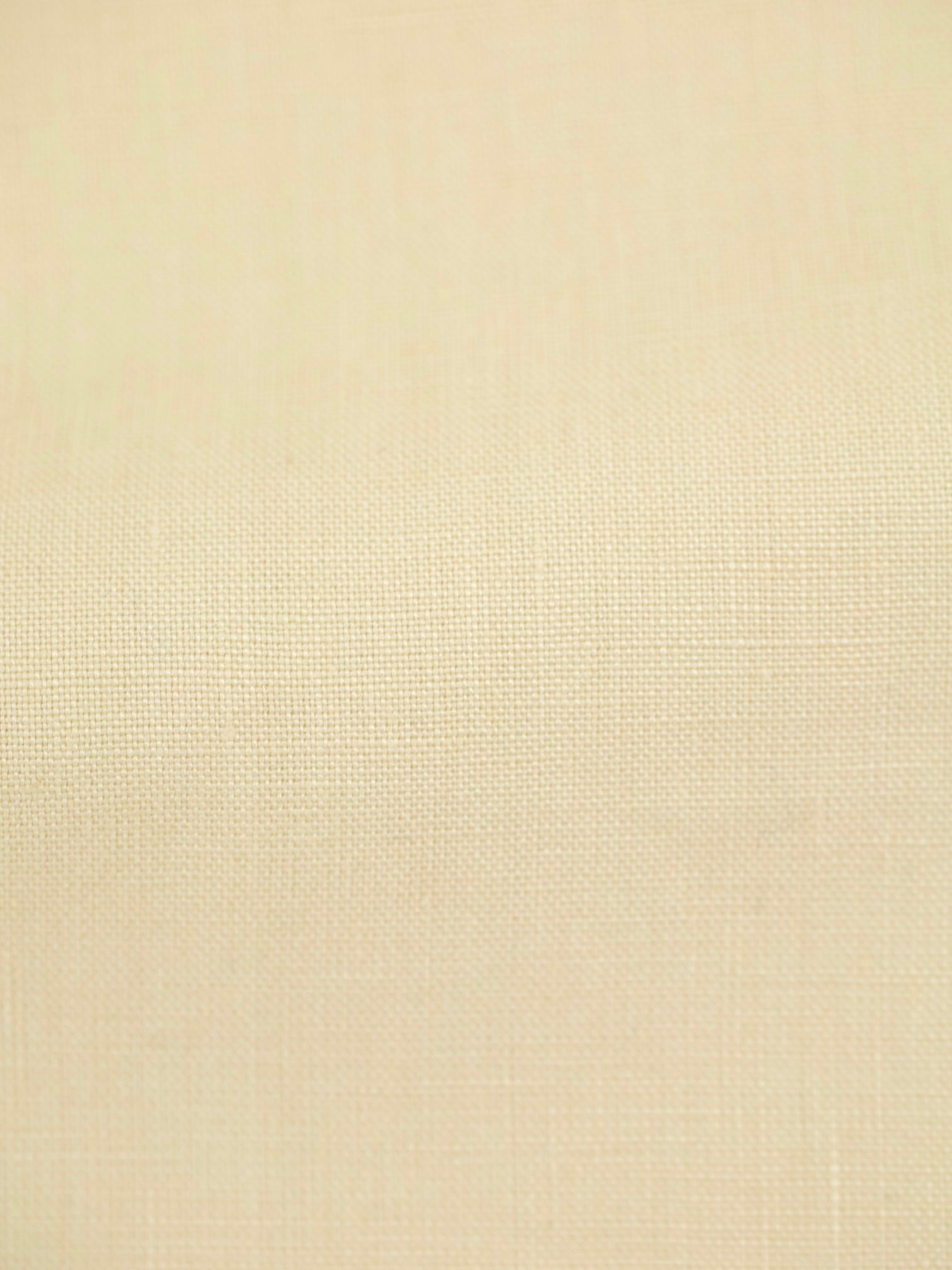

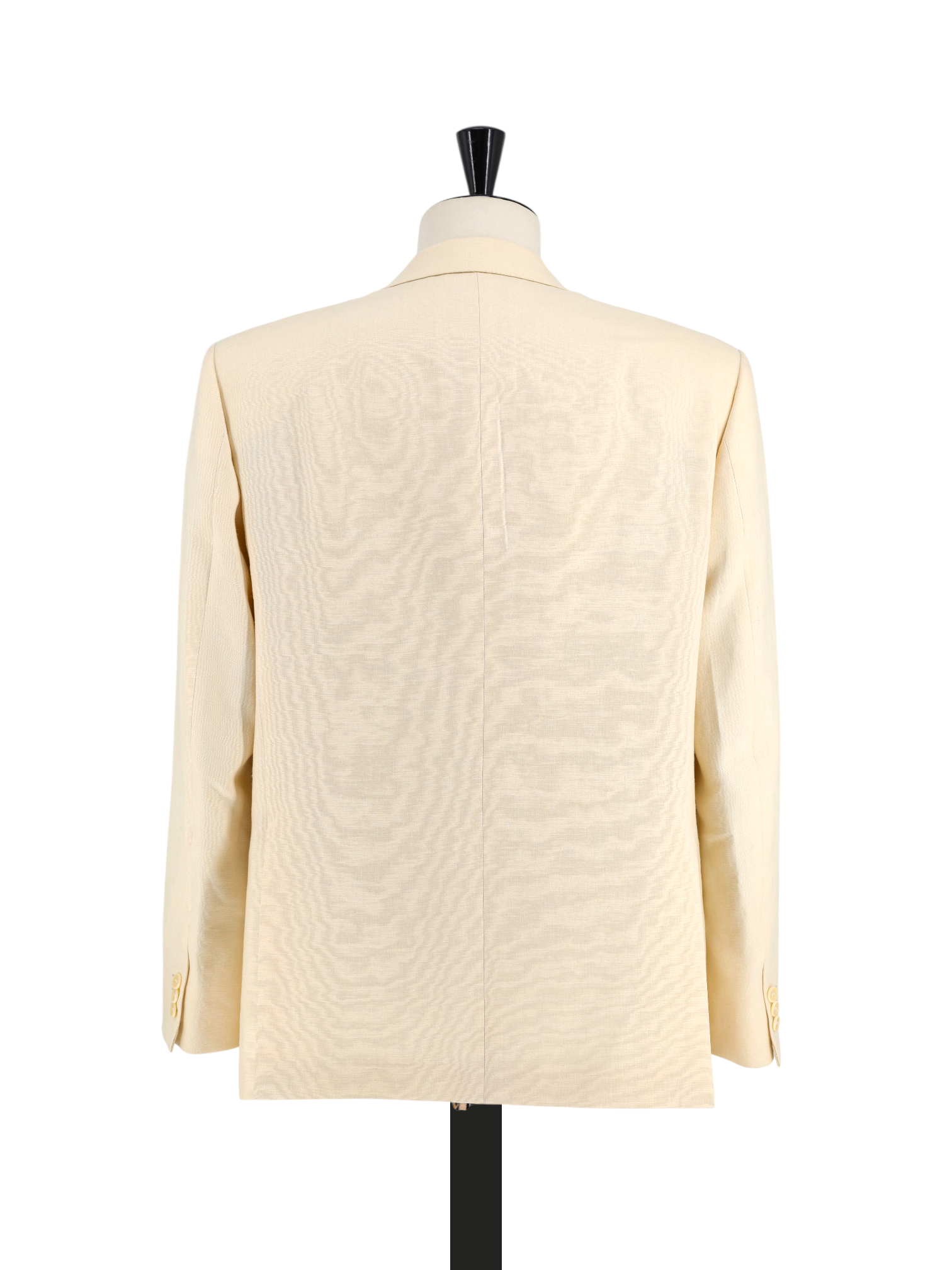
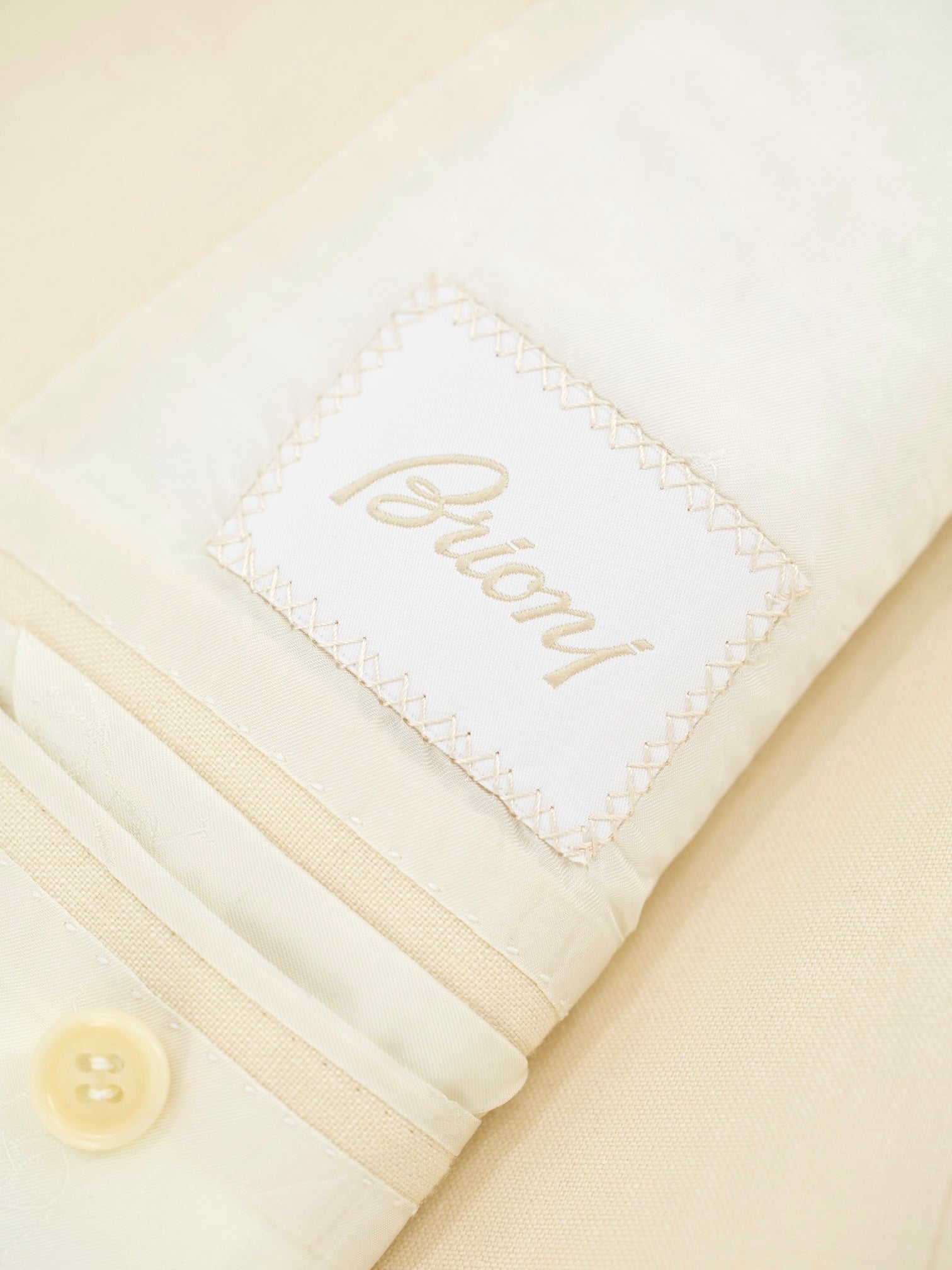
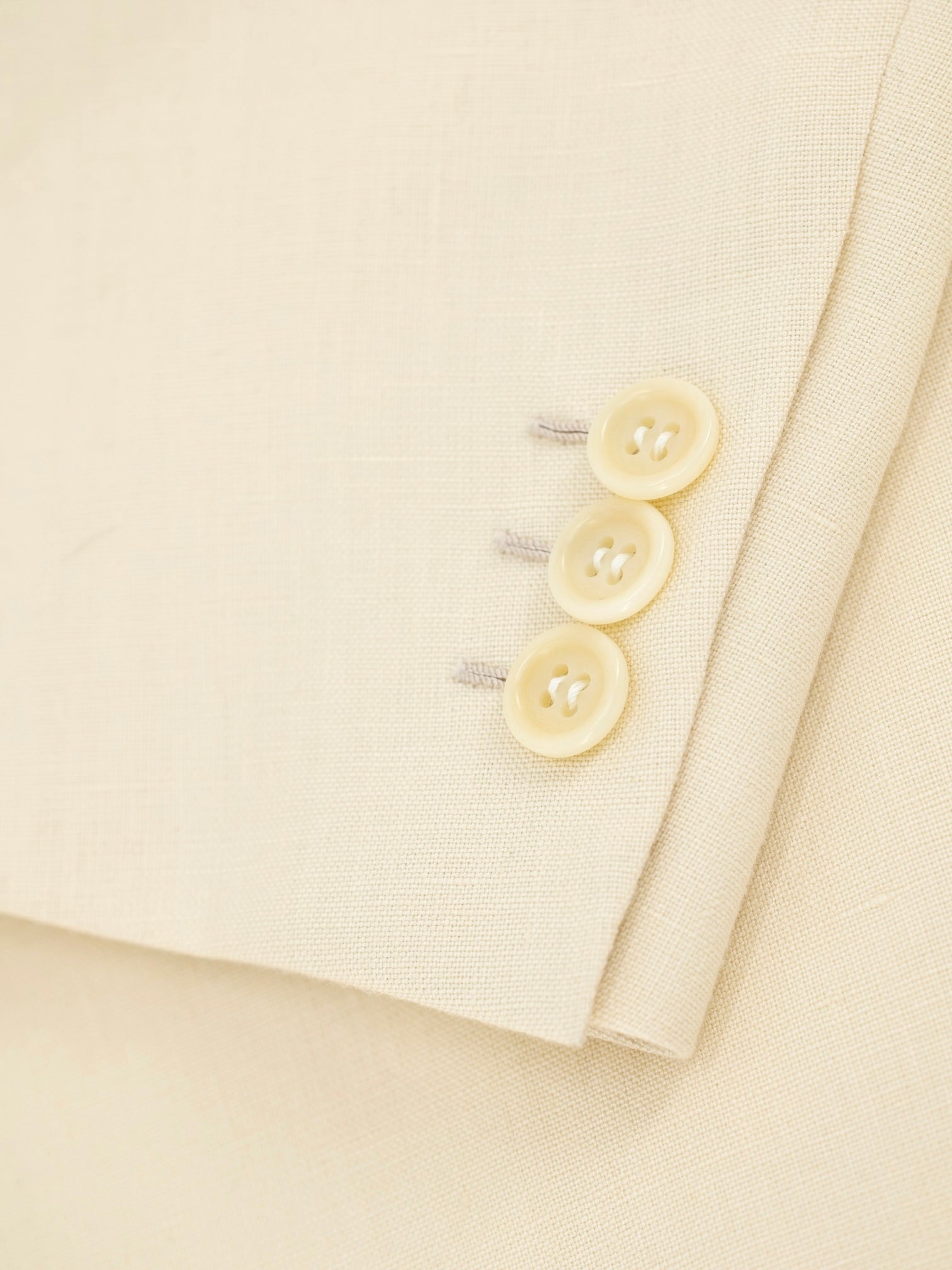
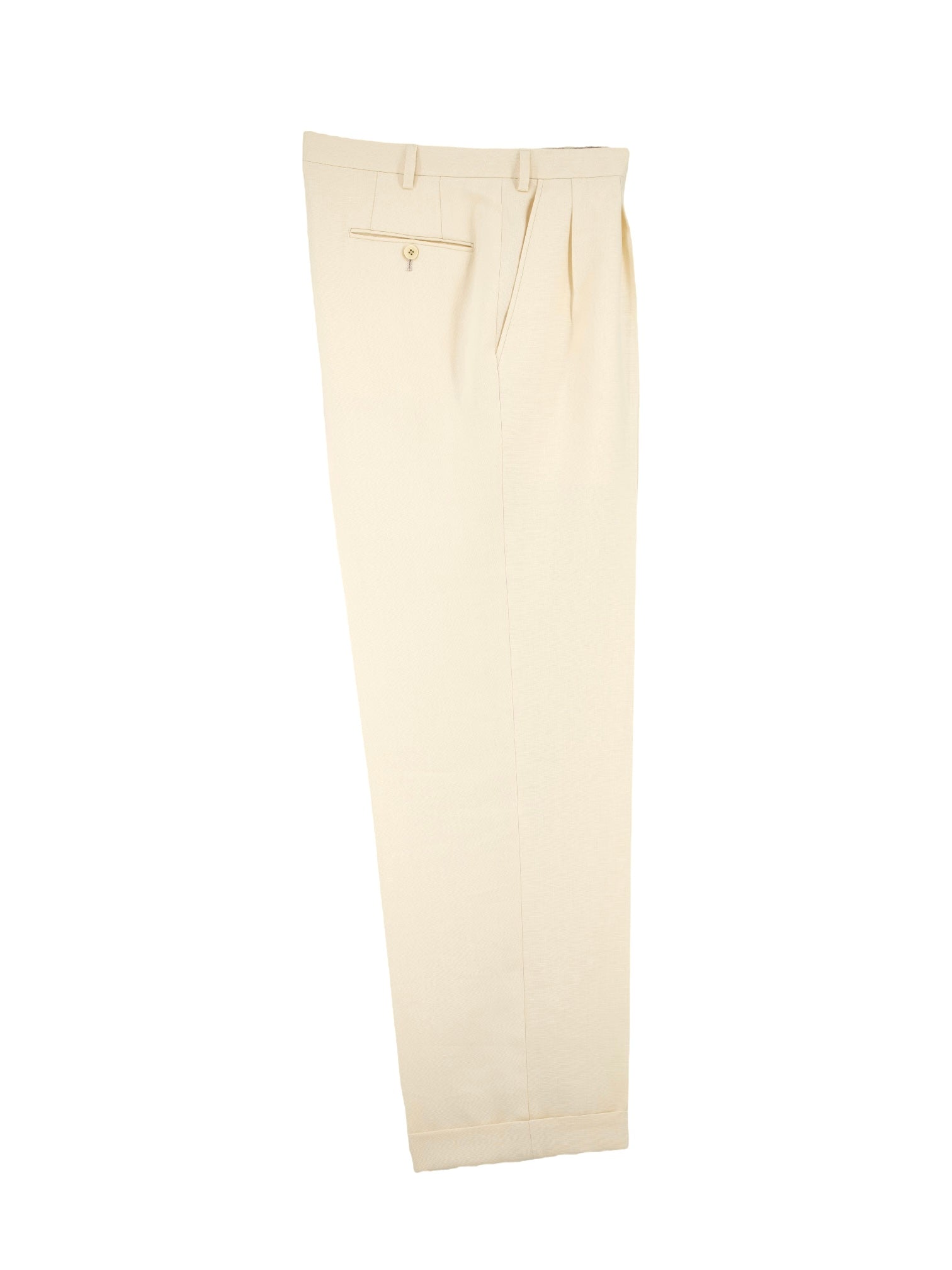
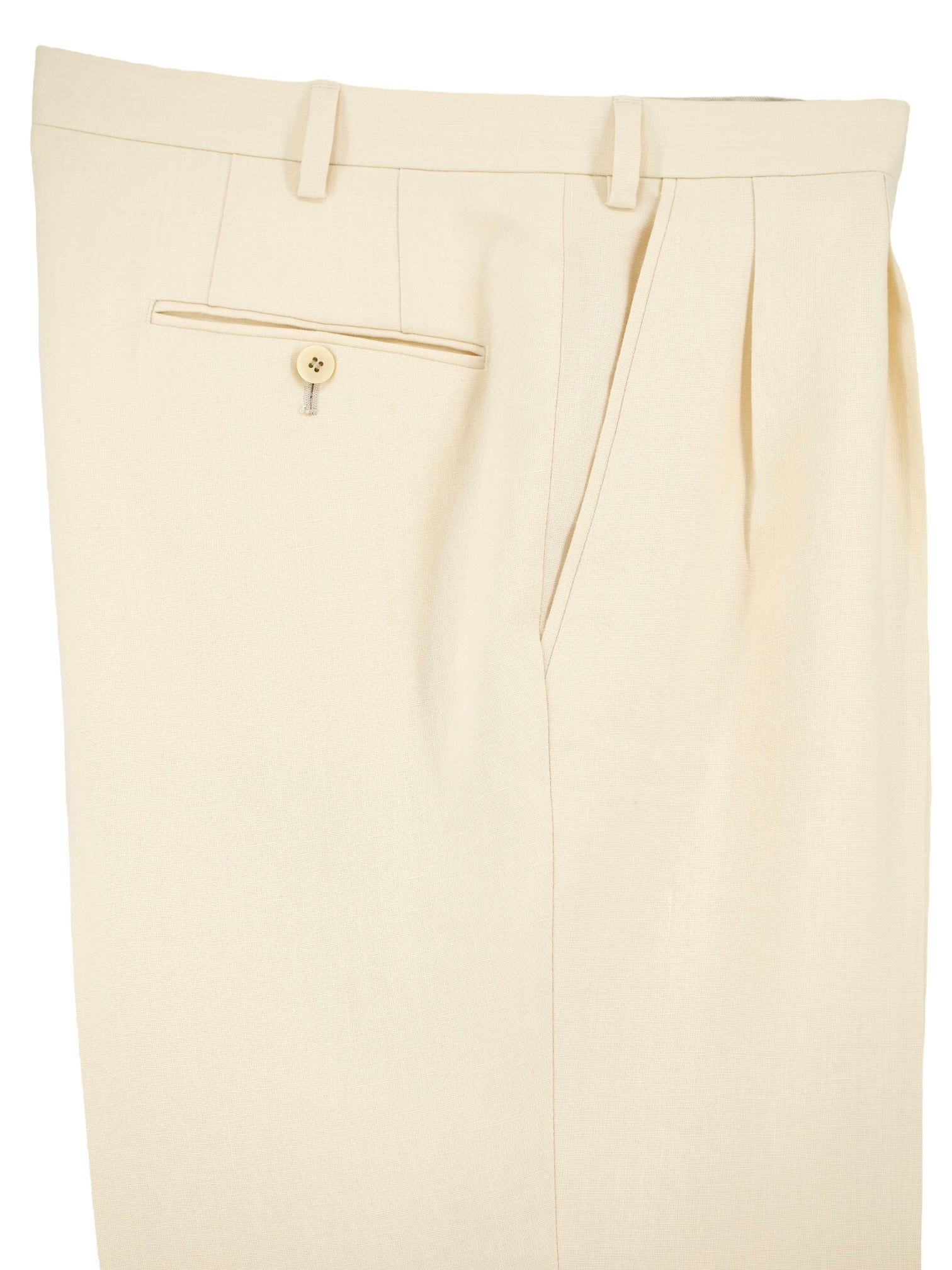
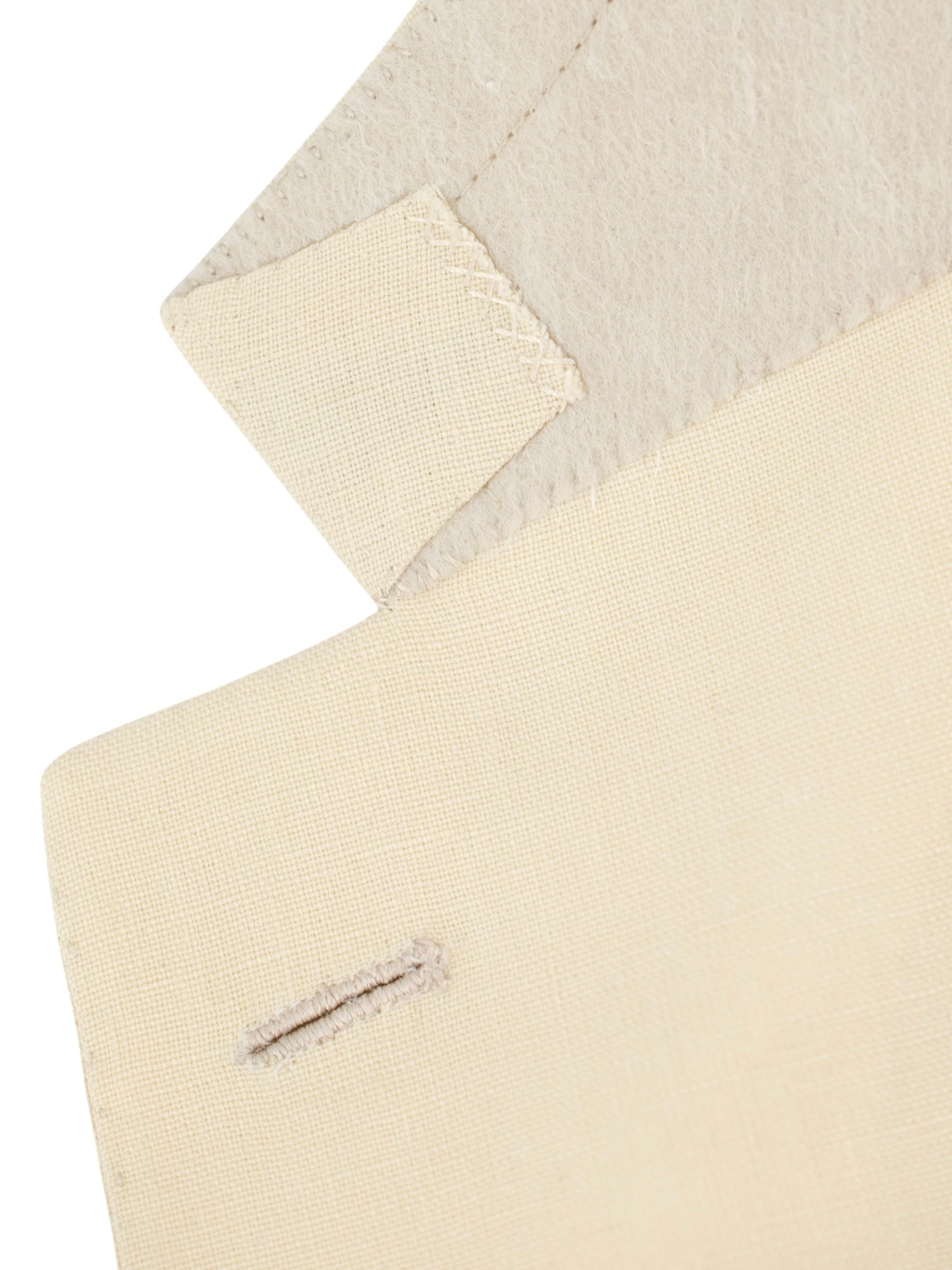
Brioni Ivory Pure Linen Palatino Summer Suit
56 IT / 46 US / Extra Extra Large
Discover the Brioni Ivory Pure Linen Palatino Summer Suit, a statement in Roman nonchalance and cinematic flair. Cut in breezy pure linen, this ivory-hued ensemble is made for sun-drenched days that demand polish without the weight. The jacket features classic notch lapels and a relaxed 2.5-button closure, subtly rolling to mirror the quiet confidence of its wearer. Roman-style shoulders; clean, structured, yet less rigid than their English counterparts—anchor the silhouette with composure. The double-pleated trousers fall in a straight, commanding line, evoking the swagger of mid-century icons and, quite deliberately, the aura of a high-summer mafia movie, where tailoring speaks louder than words.
The "Palatino" fit represents one of Brioni’s more traditional, full-bodied cuts, named after the Palatine Hill in Rome, the cradle of Roman aristocracy. Unlike the brand’s slimmer silhouettes, the Palatino cut champions balance, room, and natural drape, reflecting Brioni’s tailoring philosophy from its golden age. Jackets in this fit feature a generous chest, a soft waist suppression, and broader lapels, offering a quietly assertive presence that resists fleeting trends. The trousers complement with fuller thighs and clean, uninterrupted lines. This fit is often favored by those who seek timeless elegance with Roman gravitas, a silhouette that moves with quiet assurance rather than shouting for attention.
Every element of this suit has passed through Brioni’s storied Roman atelier, where artisans construct each garment through a blend of old-world precision and fluid modernity. From hand-set sleeves to the subtle roll of the lapel, craftsmanship is ever-present but never showy. The linen, sourced from top-grade European mills, is washed and treated for a slightly broken-in hand, allowing it to develop character over time. This is tailoring as legacy; confident, indulgent, and unapologetically cinematic. Discover the elaborated sartorial details below.
Composition: 100% Linen
Color: Ivory
Pattern: Plain
See how we measure our sartorial items
Discover the customization possibilities by visiting our tailor alteration guide
Shipping
- Complimentary shipping on orders over €200 (Netherlands), €500 (EU), and €1,000 (rest of world).
- Orders under these amounts: shipping rates depend on your country.
- Customs duties or import fees may apply and are the customer’s responsibility. The courier may charge additional fees.
Returns
- You have the right to return your order within 14 days of delivery.
- If you wish to return an item, please notify us within 48 hours of receiving your order.
- Return shipping is at the customer’s expense.
- A 10% restocking fee will be deducted from your refund for all returns.
Please carefully review all measurements and quality control notes in the listing before purchasing. Return shipments have an environmental and economic impact. For any questions or if you need help, feel free to contact us before placing your order.
General Note: While we inspect each item to ensure its quality, please note that minor imperfections may be present due to the preloved nature of the garments. We strive to represent every item accurately, but subtle signs of wear may sometimes go unnoticed. We appreciate your understanding and commitment to sustainable luxury.
Choose options









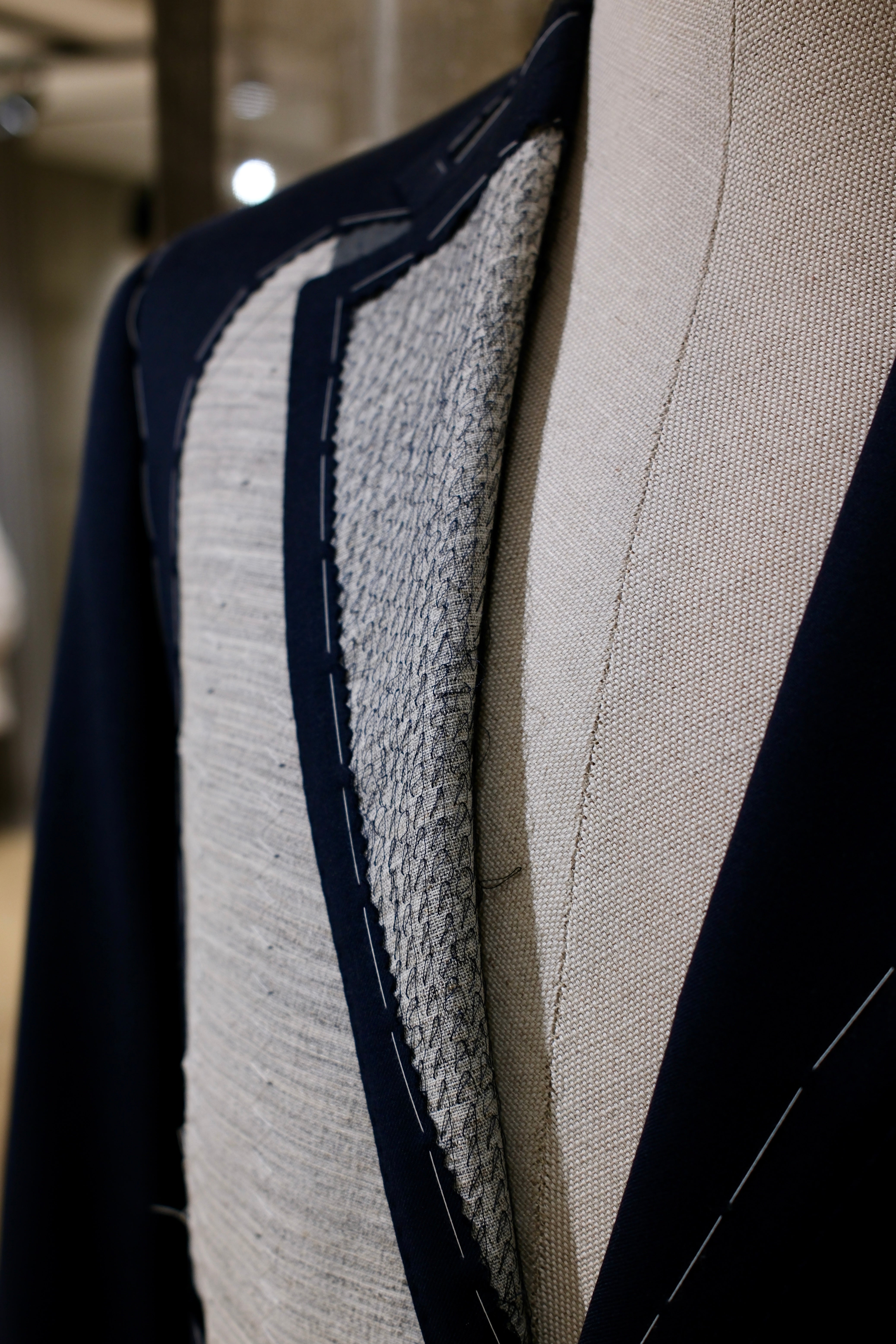
Discover the
Sartorial Details

Full Canvas Construction
A sartorial jacket - or coat - needs an interlining that will help give it shape and mold it. Canvas gives the item a tailored and crafted look. In short, it breathes life into it. Purely technical, canvas is made from either horsehair, wool, mohair or camel hair. It could also be a mix of them all, with varying thickness and weight. The canvas is stitched to the jacket, often by hand, thus making the canvas pieces 'floating' in the middle of the inner and outer cloth. This gives the jacket added flexibility. The canvas runs from the upper parts, all the way down to the end of the jacket. After you wear your canvassed suit for a while, it will begin to take your shape and look incredibly natural.
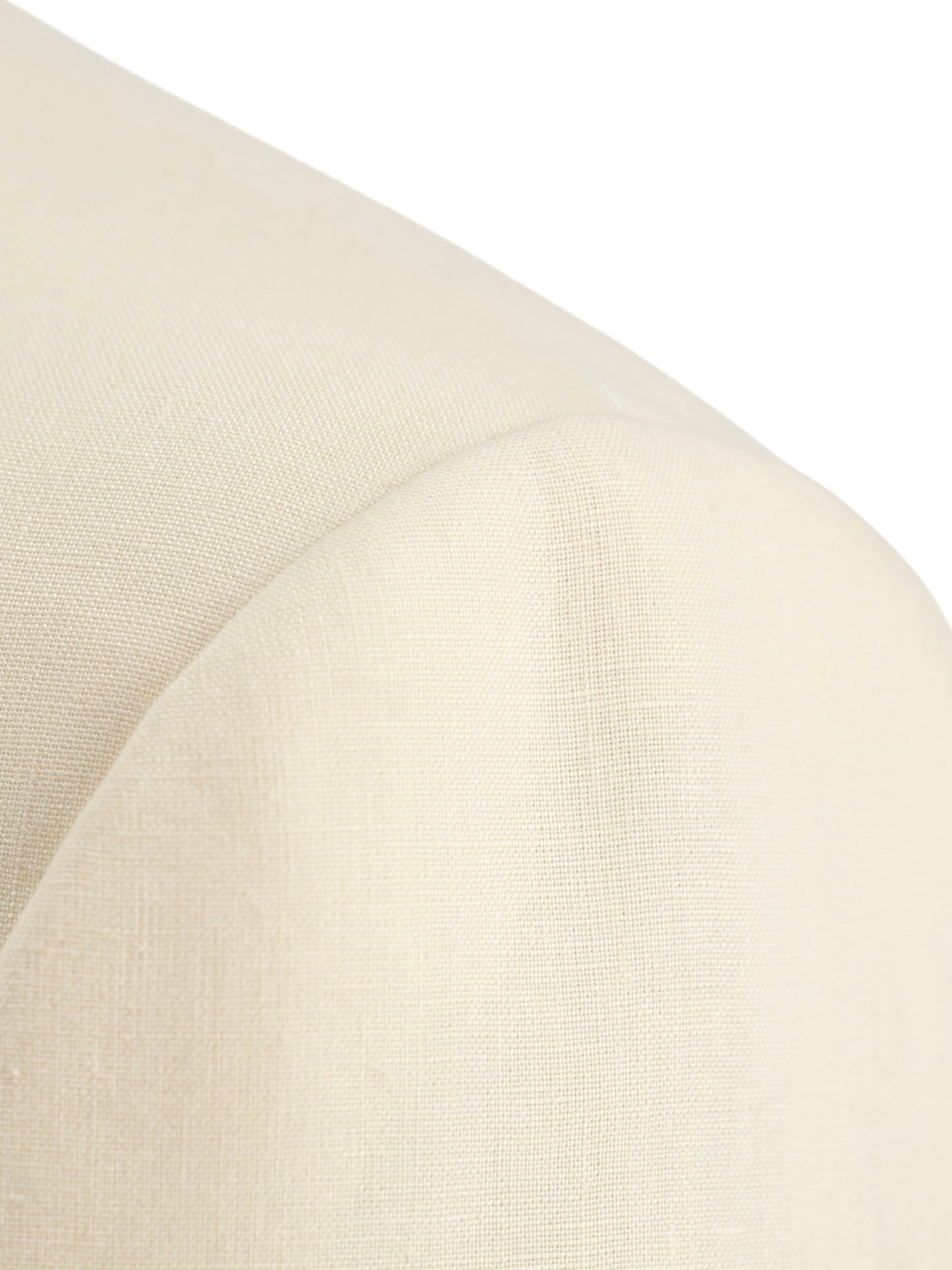
Roman Style Shoulders
Characterised by a clean, strong silhouette, the Roman style has its origins in the military and equestrian style on Savile Row. While the heavily structured, military-inspired suits with strong shoulders and stiff canvassing were fitting of English nobles, the staid style was not an adequate reflection of the Italian way of life. As Italian tailoring grew into its own, though, different styles began to develop. In Naples unstructured whimsical Neapolitan suiting took hold. In Rome, where Brioni was born, the style evolved more subtly. The structured British style was made more voluminous, body conscious, and free-flowing without losing too much of the signature Saville Row shape.
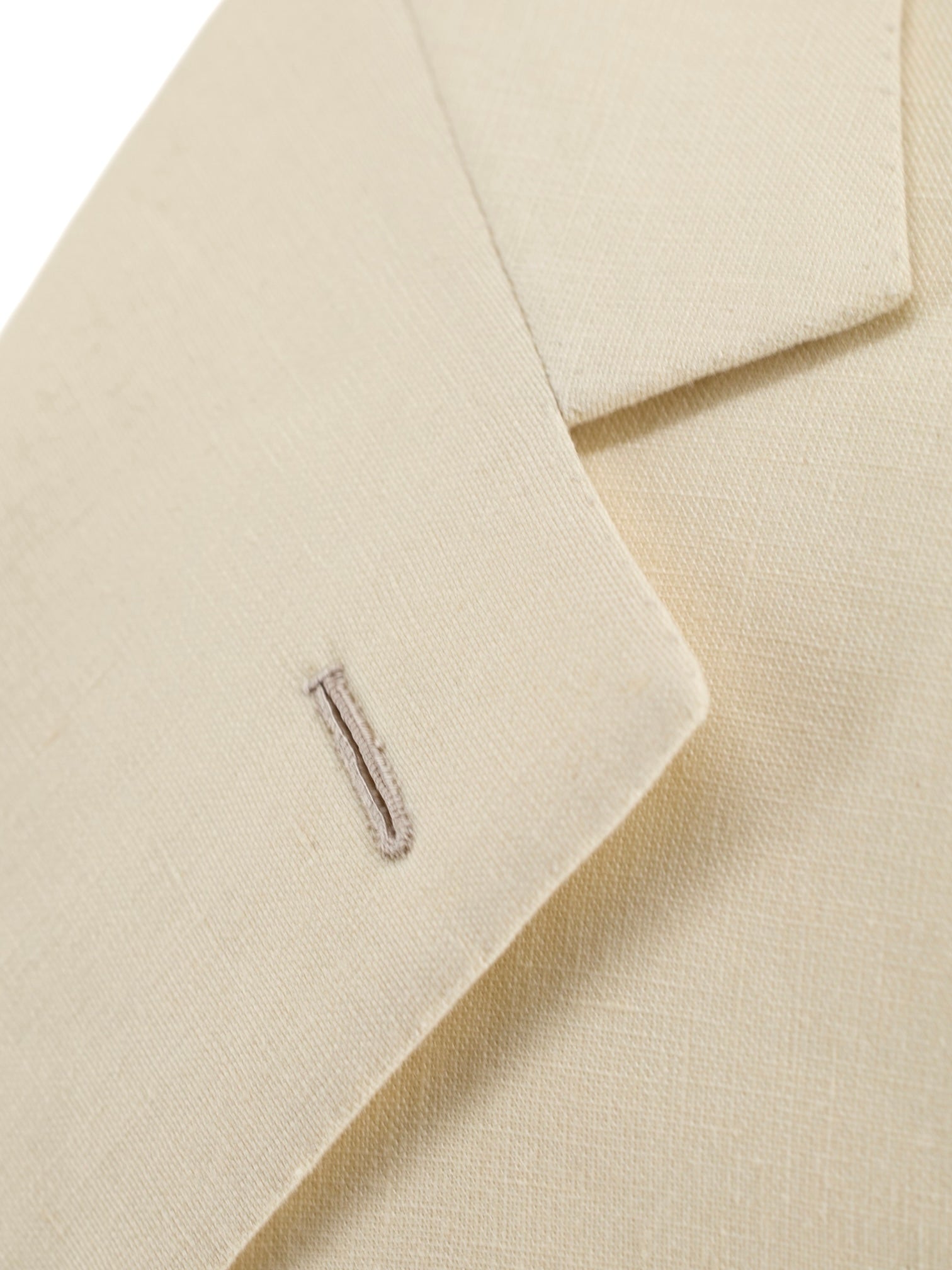
Handmade Buttonhole
Handmade buttonholes are made using a chain of knotted loops called purl stitches that make them strong and visually distinctive. It takes about five seconds to sew a regular buttonhole with a machine – a single handmade buttonhole takes about 10 minutes to sew.
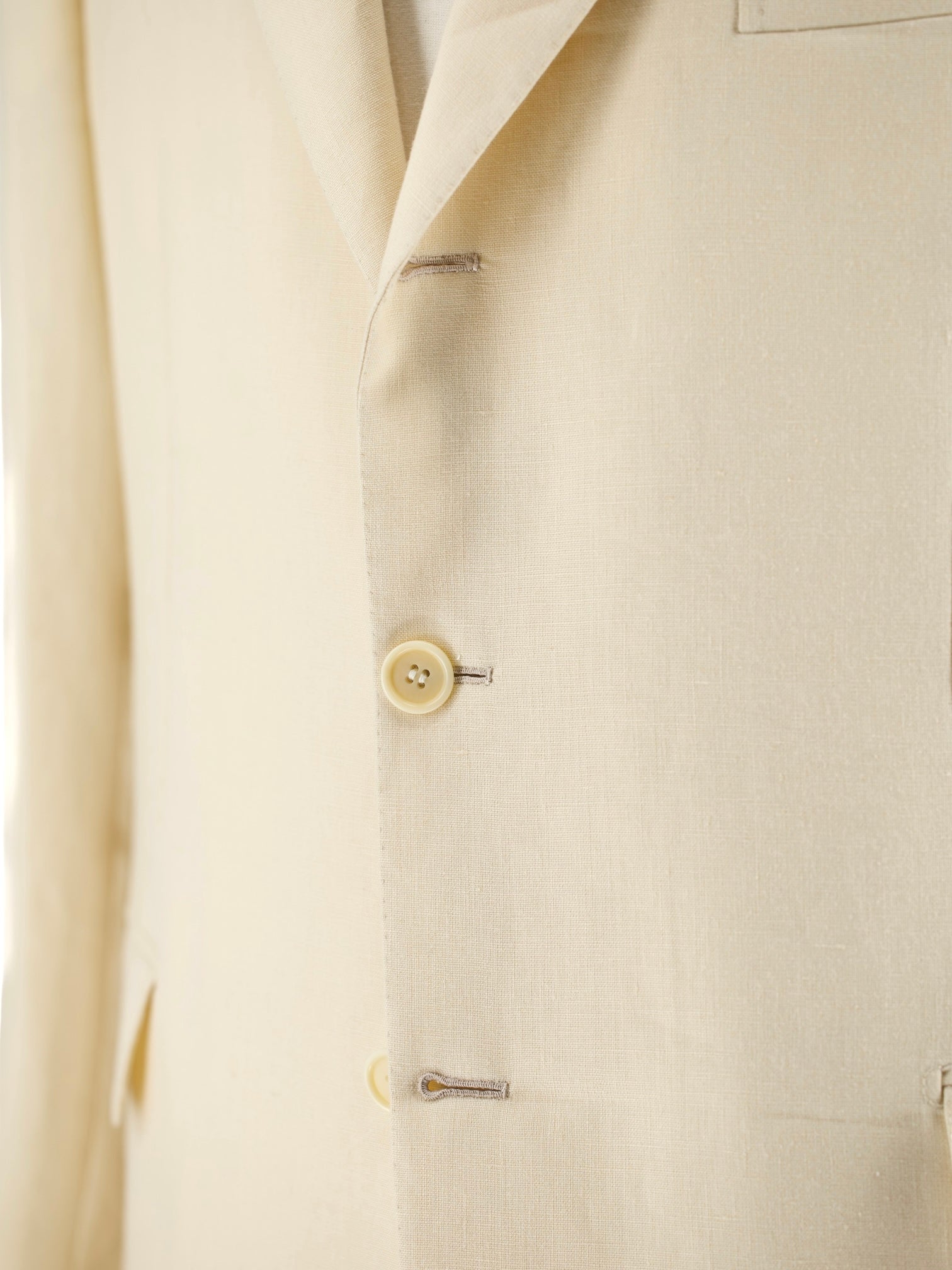
2.5 Button Closure
The ‘tre bottoni stirato a due’, also known as the three rolling on two lapel style, is perhaps the most infamous characteristic of the Neapolitan style jacket. The top button and buttonhole are ornamental, so are left unbuttoned. As the lapel rolls down it elegantly folds over the top button and stops just 4 cm above the second button creating the distinct roll of the lapel the style is known for. As it is intended to remain unbuttoned, the top buttonhole is actually made inside out so the beautiful side will still be visible.
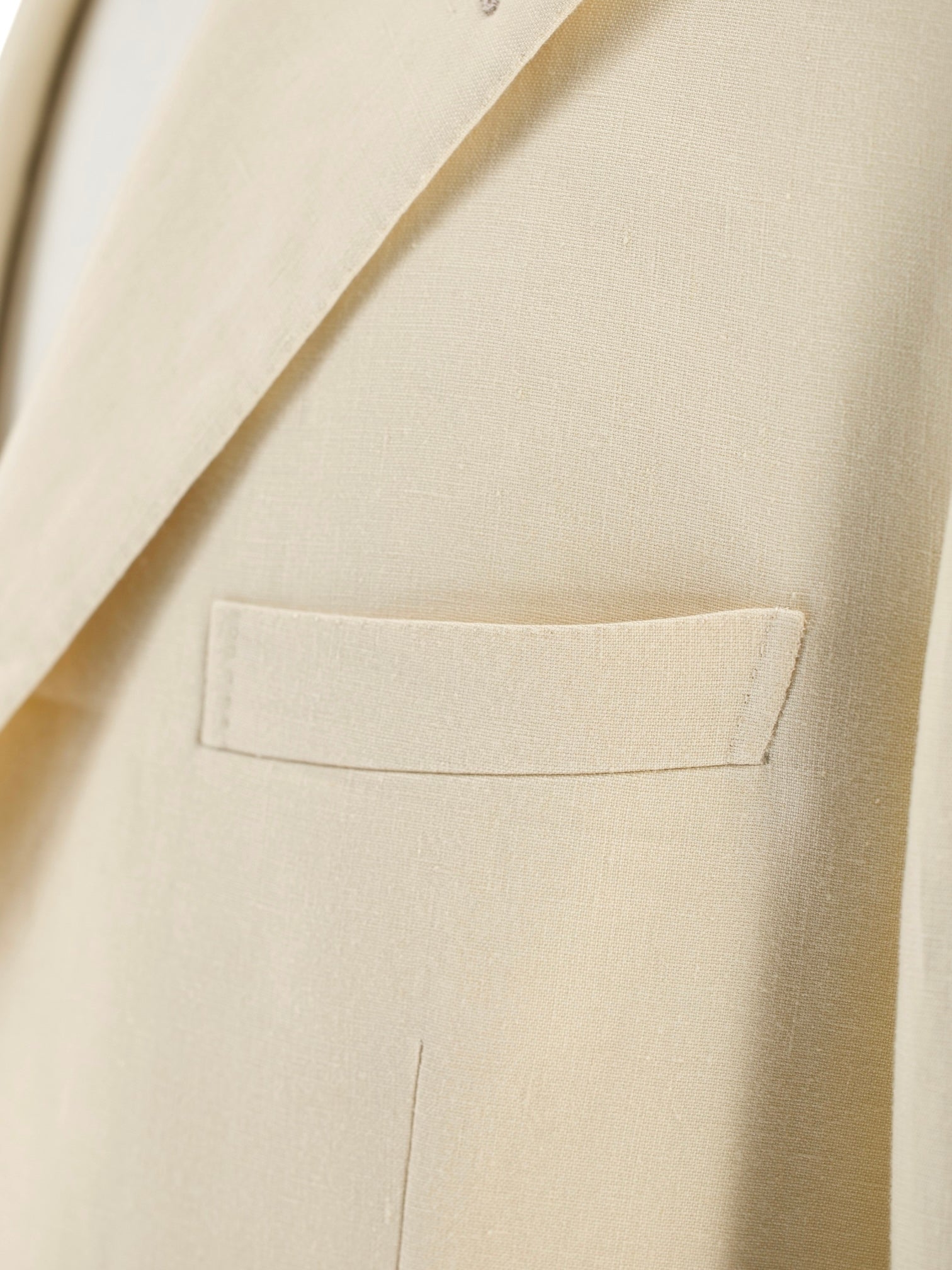
Chest pocket - Rounded welt pocket
Also known as ‘barchetta’ Italian for ‘little boat’, it is so named because this pocket floats on the chest gently angled upward, just like the bow of a sailboat. These pockets echo the lively roll of a lapel that carries the spring of canvas and natural wool, unlike machine-made chest pockets that have a more stamped-out, rectangular shape and less life.
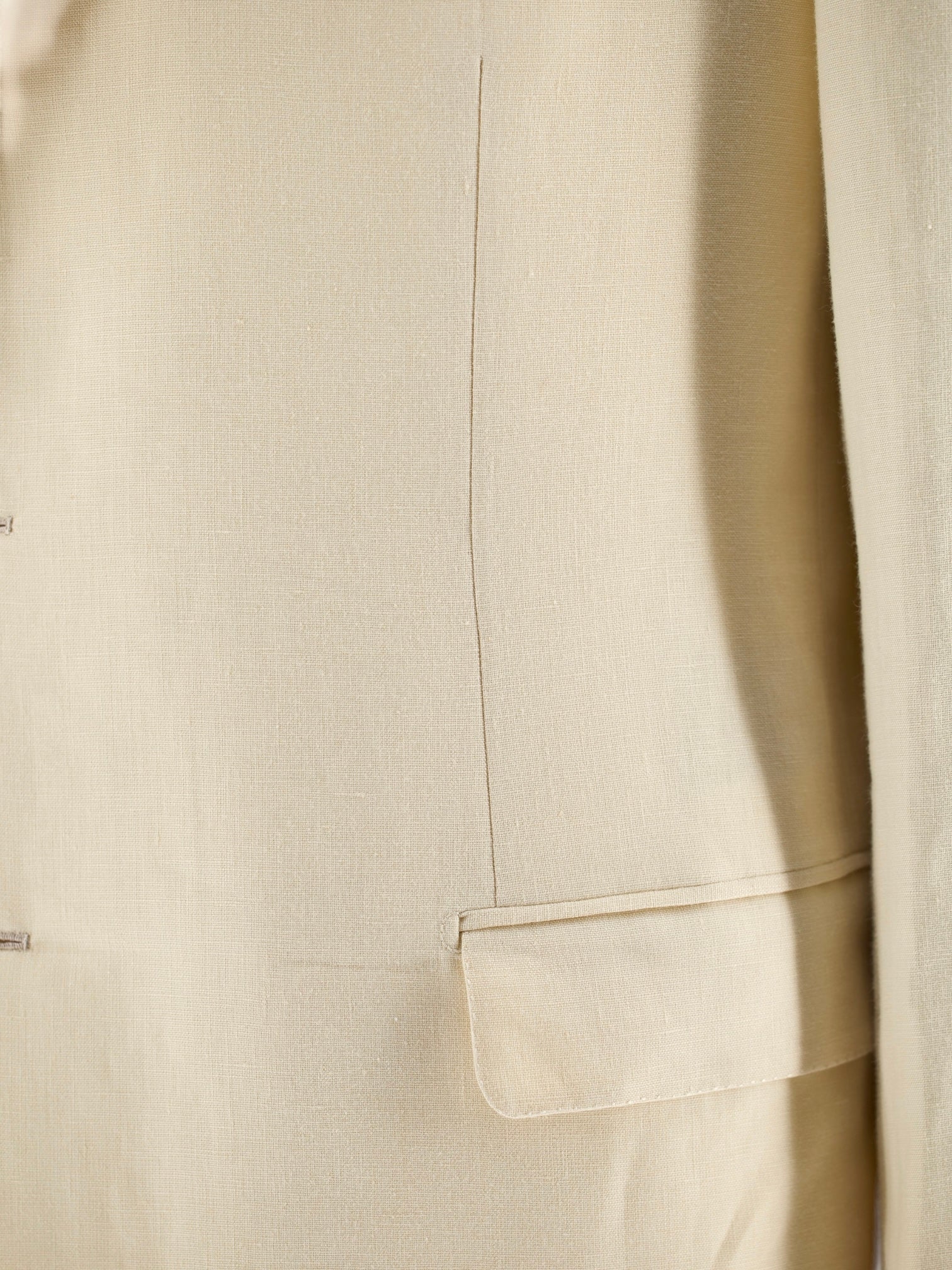
Darts
The tailors adds two darts - think of them as pinched seams - to ensure the jacket’s body achieves a slim silhouette. The process, called mezzo punto riprese, is done entirely by hand.

Mother of Pearl Buttons
Mother of pearl buttons are iridescent buttons made from an inner layer of certain shells. Especially shells of oysters and mussels that contain nacre, the mineral substance that forms pearls. What makes these buttons so iconic is their inimitable pearly finish.
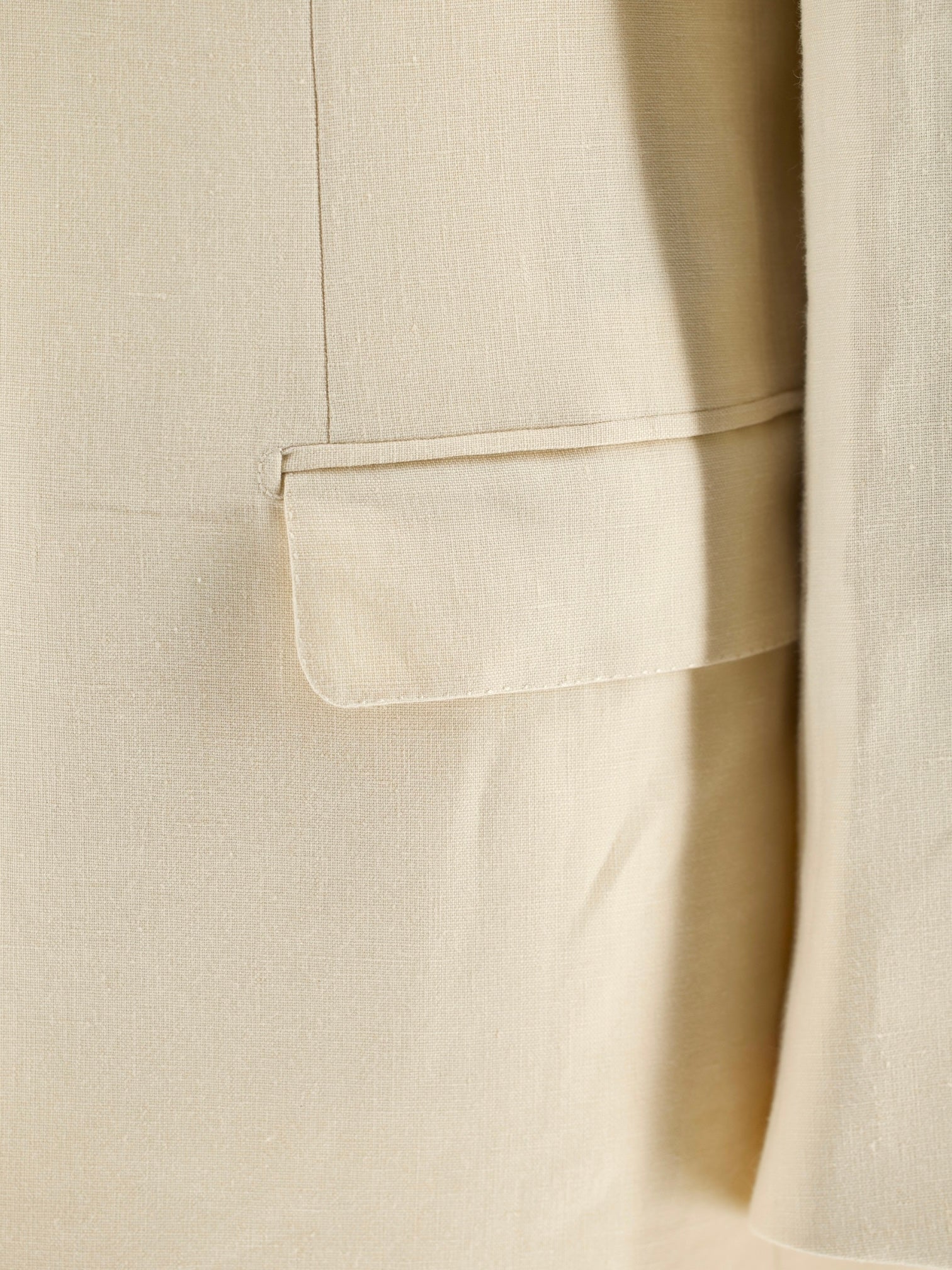
Flap Pockets
This was originally supposed to keep debris from getting into jacket pockets when worn in the country. Flap pockets occupy a sort of middle ground in terms of formality: they are the main choice for business suits, but they can also appear on sport coats as a testament to their casual origins.
the details of
the trousers

Double Pleated Front
Double-pleat trousers are all about classic elegance. They were a staple in the 1930s and 1940s, an era known for its fuller, more comfortable styles. With two pleats, these pants provide extra room, especially around the hips and thighs, making them great for formal settings. They bring to mind the sophisticated styles of Hollywood icons like Cary Grant, who wore them with effortless charm. Even though slimmer fits have become more popular, double pleats remain appealing for those who appreciate traditional tailoring and timeless style.
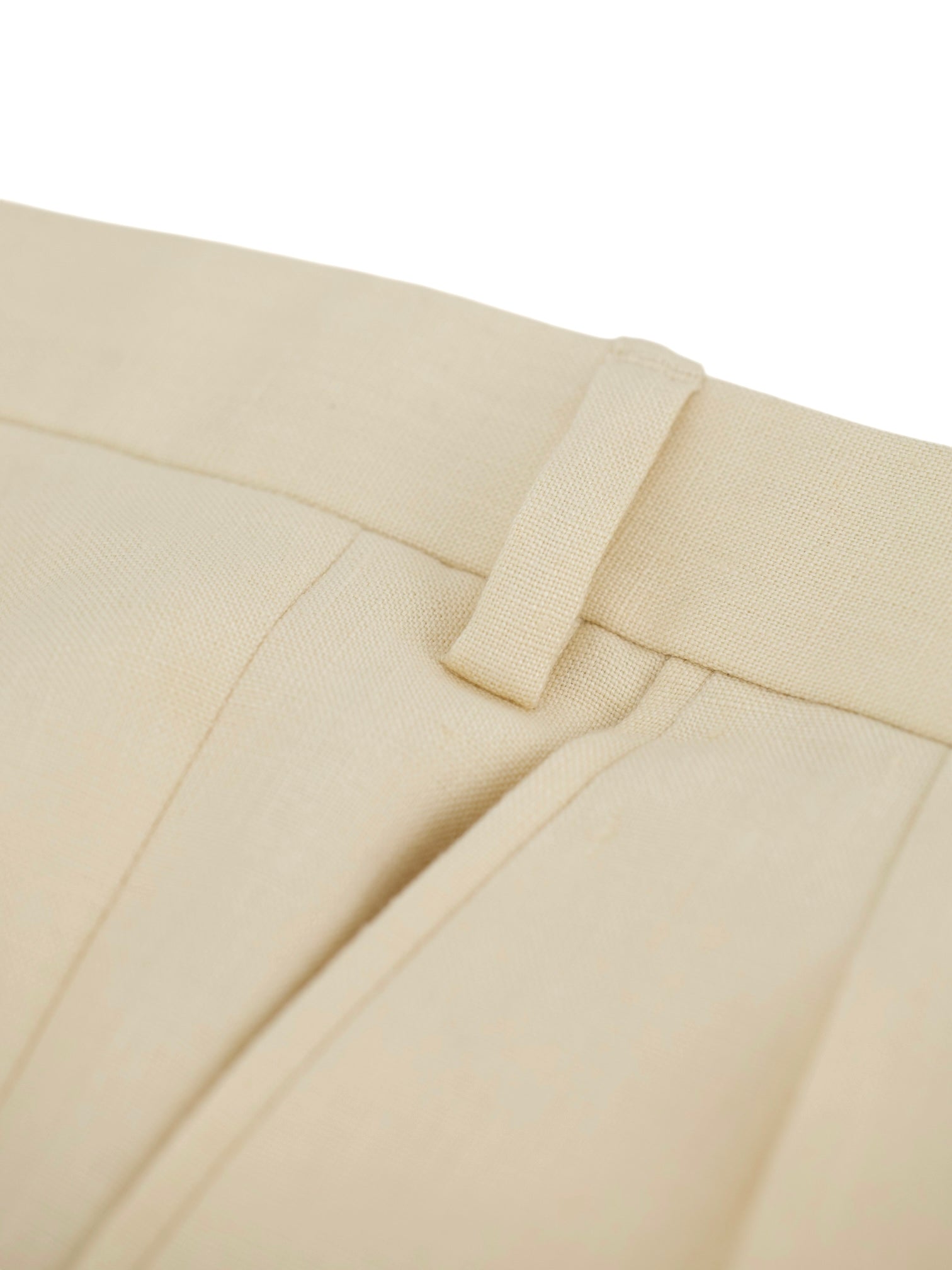
Belt Loops
Belt loops are the most common type of waistband found on trousers, providing the option to wear a belt for both style and practicality. Typically spaced evenly around the waistband, belt loops are a versatile feature that can accommodate a wide range of belt styles and sizes. This traditional waistband design is found in everything from casual jeans to formal dress pants, making it a timeless and adaptable option for any wardrobe. Belt loops offer the flexibility to customize your look while ensuring a secure fit.
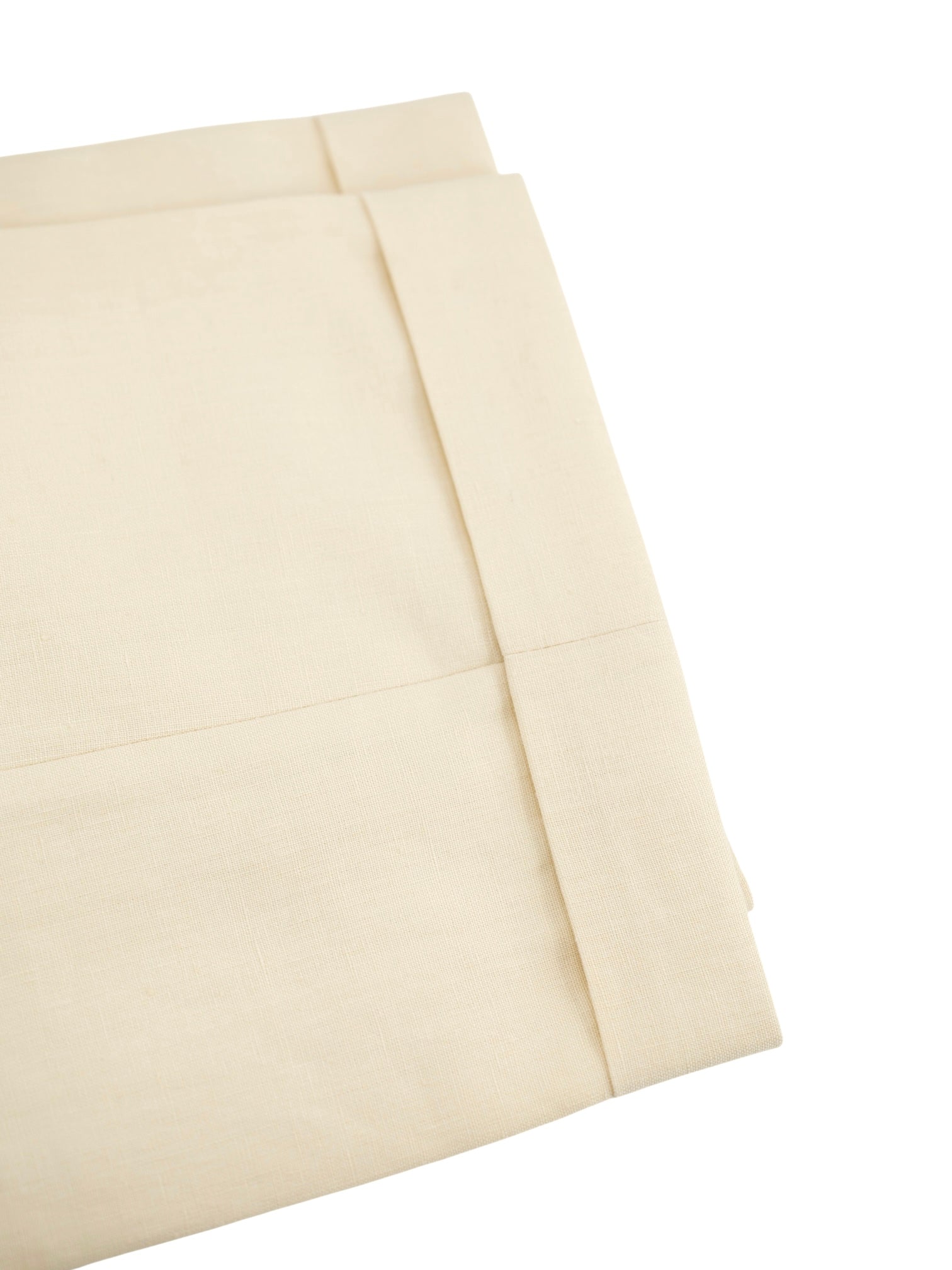
Turn-Up (Cuffed) Hem
The turn-up hem, or cuffed hem, is a classic style where the fabric at the bottom of the trousers is folded outward to create a visible cuff. This style originated with Edward VII in the late 19th century, who had his trousers tailored with cuffs to prevent them from getting muddy, sparking a trend among the fashionable elite. In the 1920s and 1930s, turn-ups became a symbol of wealth and sophistication, as having extra fabric was seen as a luxury. This association continued after World War II when wearing turn-ups subtly indicated affluence in an era of fabric rationing. Today, turn-up hems are a nod to their historical roots, offering a touch of classic elegance and enhancing the overall appearance of formal and tailored trousers.
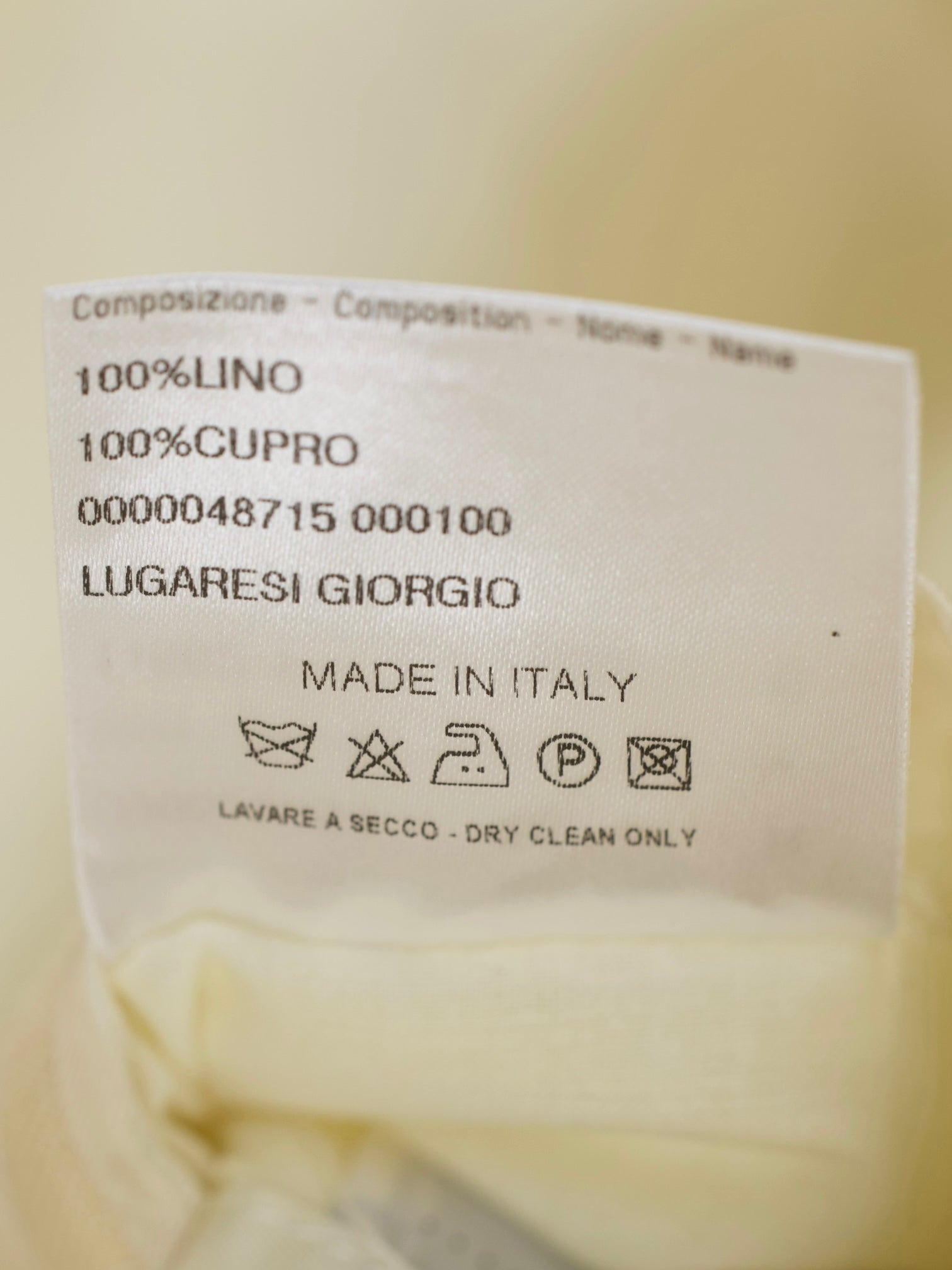
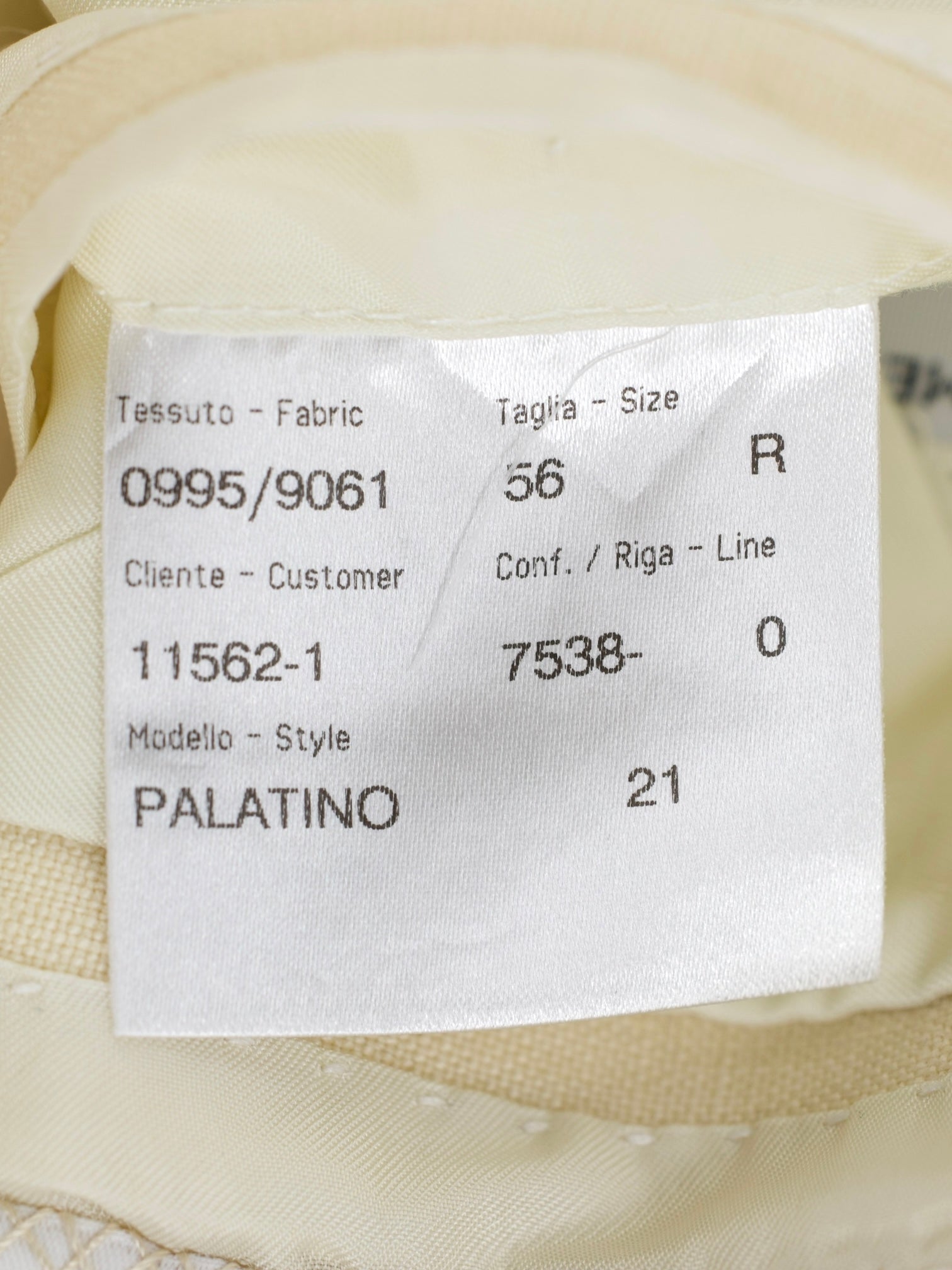
size
56 IT / 46 US / Extra Extra Large


 Curator's Description
Curator's Description Materials
Materials